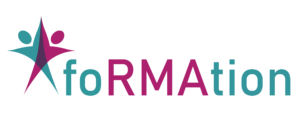Lesson 1: Impact: why research matters?
See the introductory video
Complete the exercise
- The student can understanding of the concept of research impact and the different areas of impact beyond academia.
- The student can distinguish between output, outcome and impacts.
- The student will become familiar and differentiate several RMA facilitation roles that add value to research (such as science communication, societal engagement, technology and knowledge exchange).
- The student can explain the benefits that impact-driven research can bring to the economy and society.
- The student can explore several paths to maximise research impact (for example by finding the ways to incorporate the most relevant 17 sustainable development goals into the research project).
Lesson 2: Responsible Research and Innovation approach - the EU drivers for Impact
- The student can explain Responsible Research and Innovation (RRI) principles and practices in its main thematic elements: public engagement, open access, gender, ethics, science education, science communication and engagement, and impact.
- The student can identify cross-cutting issues in a given project (e.g. ethical and gender issues) and identify different strategies to address them in different research projects.
- The student can argue about the reasons for promoting accountability, responsibility, ethics and integrity in research.
- The student can contribute to the design of activities and instruments fitted to each of the RRI principles.
Lesson 3: Pathways to impact: planning a strategy for public engagement
- The student will become familiar and differentiate several RMA facilitation roles that add value to research (such as science communication, societal engagement, technology and knowledge exchange).
- The student is aware of the major elements and characteristic features of a research engagement plan and the key performance indicators.
- The student will be able to map the different target stakeholders and its roles at different stages of the research project.
- The student is able to select the engagement strategies, platforms and communication style suited for each target audience.
Lesson 4: Science communication and dissemination: framing the message
See the introductory video
Complete the exercise
- The student can distinguish the aims and activities pertaining to science communication, dissemination and broader impact.
- The student can effectively communicate ideas and the main results of a given project to non-specialist audiences, applying different strategies to increase audience interest and understanding.
- The student can implement science engagement tasks in simulated situations.
Lesson 5: Oral presentations
- The student can design a research engagement plan and identify suitable key performance indicators to assess stakeholder engagement.

